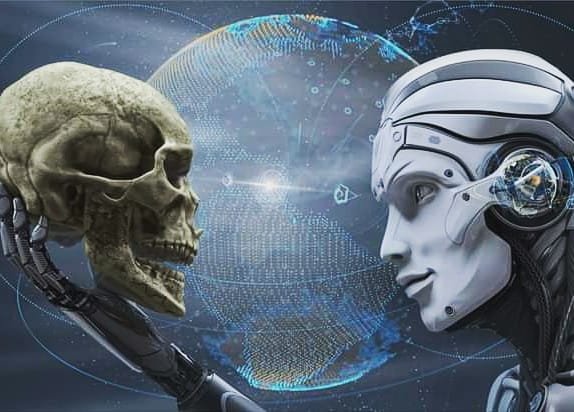The US Military has deployed robot dogs to test them for use in modern warfare 😲.
Get the latest international news and world events from around the world.
Real Mars video 1.8 billion pixels!
Amazing new Mars panorama from Curiosity For 10 Years NASA Has Been Capturing Images of Mars and They Now Reveal the Planet’s Amazing Beauty.


The Road to Human 2.0
In the coming 2020s, the world of medical science will make some significant breakthroughs. Through brain implants, we will have the capability to restore lost memories.
~ The 2020s will provide us with the computer power to make the first complete human brain simulation. Exponential growth in computation and data will make it possible to form accurate models of every part of the human brain and its 100 billion neurons.
~ The prototype of the human heart was 3D printed in 2019. By the mid- 2020s, customized 3D- printing of major human body organs will become possible. In the coming decades, more and more of the 78 organs in the human body will become printable.
…As we enter into the next few decades, we will have the technologies that grant us the possibility of immortality, albeit one that is highly subjective.
With our ability to 3D print new body organs, our ability to use nanotechnology in fighting death at cellular levels, our ability to use CRISPR or other gene-editing technology to rewrite our definition of humans and even our ability to capture and extend our consciousness beyond the confines of the biological weakness of our human bodies — immortality may be within reach of our fingers as depicted in the painting of Michelangelo.
The race to human 2.0 will be run broadly in two spectrums — the evolution of our body and the evolution of our minds.
Excerpt from my book — 2020s & The Future Beyond.



Phytomining — Mining With Trees — Could Save Our Planet
You can buy Universe Sandbox 2 here: http://amzn.to/2yJqwU6
Or get a shirt: https://teespring.com/stores/whatdamath
Hello and welcome! My name is Anton and in this video, we will talk about new advances in phytomining — the potential future of mining on our planet — by using plants and trees to do the hard work for us.
Image Credit: Anthony van der Ent
Papers:
https://nph.onlinelibrary.wiley.com/doi/full/10.1111/nph.149…C%202013).
https://www.sciencedirect.com/science/article/abs/pii/S1360138598012837
https://core.ac.uk/download/pdf/77625923.pdf
https://www.sciencedirect.com/science/article/pii/B9780128031582000151
https://www.uni-goettingen.de/en/446064.html
https://www.sciencedirect.com/science/article/pii/B9780128031582000151
https://www.researchgate.net/publication/341665760_Use_and_v…ic_regions
https://www.researchgate.net/publication/329579782_The_first_tropical_’metal_farm’_Some_perspectives_from_field_and_pot_experiments
Support this channel on Patreon to help me make this a full time job:
https://www.patreon.com/whatdamath
Space Engine is available for free here: http://spaceengine.org
Enjoy and please subscribe.
Twitter: https://twitter.com/WhatDaMath
Facebook: https://www.facebook.com/whatdamath
Twitch: http://www.twitch.tv/whatdamath
Bitcoins to spare? Donate them here to help this channel grow!
The End of Overpopulation Part 1: Overview
Many fearmongerers say that overpopulation will spiral out of control. However, in this video, I will talk about why population growth will not continue forever.
Discord Link: https://discord.gg/brYJDEr
Patreon link: https://www.patreon.com/TheFuturistTom
Please follow our instagram at: https://www.instagram.com/the_futurist_tom
For business inquires, please contact [email protected]
